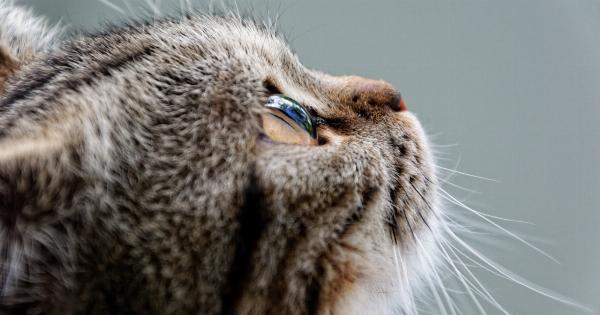Pets have become an integral part of our lives, bringing us joy, companionship, and love. As responsible pet owners, we want to ensure that our furry friends receive the best possible care in times of need.
One way to provide that peace of mind is through pet insurance, which can help cover unexpected veterinary expenses. But is it possible to insure your furry friend? Let’s delve into this topic and explore the wonderful world of pet insurance.
What is Pet Insurance?
Pet insurance is a type of insurance policy that helps cover the cost of veterinary care for your beloved pets.
It functions similarly to human health insurance, giving you financial protection when your pet faces unexpected accidents, illnesses, or injuries.
While the concept of pet insurance might be relatively new to some, it has gained popularity in recent years as more and more people recognize the value of securing their furry friends’ health and well-being.
By purchasing pet insurance, you can focus on your pet’s health instead of worrying about the financial burden it may bring.
Understanding the Benefits of Pet Insurance
Pet insurance offers numerous benefits to both pet owners and their furry companions. Let’s explore some of the key advantages:.
1. Financial Protection
Just like human health insurance, pet insurance helps protect you from unexpected and potentially high veterinary costs. It acts as a safety net, preventing you from having to make difficult decisions based solely on the cost of treatment.
2. Freedom of Choice
With pet insurance in place, you have the freedom to choose the best possible treatments and medical care for your pet. You can consult with veterinarians and explore various options without constantly worrying about the financial implications.
3. Peace of Mind
Having pet insurance provides peace of mind, knowing that you have financial coverage if your pet encounters an accident or illness.
It allows you to focus on your pet’s well-being rather than worrying about how you will afford their medical expenses.
4. Tailored Coverage
Pet insurance policies often come with customizable options, allowing you to tailor the coverage based on your pet’s specific needs.
This flexibility ensures that you are getting the most suitable coverage for your furry friend, whether they are young, old, or have certain medical conditions.
Types of Pet Insurance
There are various types of pet insurance policies available, each offering different levels of coverage. Here are some common types:.
1. Accident-Only Coverage
This type of pet insurance focuses solely on accidents and injuries, such as broken bones, cuts, or poisoning. It typically does not cover illnesses or pre-existing conditions.
2. Time-Limited Coverage
Time-limited pet insurance provides coverage for a specific period, usually 12 months. It covers both accidents and illnesses, but any condition diagnosed during the policy period will not be covered once the policy expires.
3. Maximum Benefit Coverage
This type of pet insurance offers a maximum limit for each condition or illness. Once you reach the limit, you will no longer receive coverage for that specific condition. However, other conditions may still be covered.
4. Lifetime Coverage
Lifetime coverage is the most comprehensive type of pet insurance. It covers both accidents and illnesses throughout your pet’s lifetime, as long as you renew the policy each year without a break in coverage.
This type of insurance is highly recommended for those seeking long-term peace of mind.
Factors to Consider when Insuring Your Pet
Before purchasing pet insurance, it’s crucial to consider several factors to ensure you make an informed decision:.
1. Age of Your Pet
Pet insurance providers have different age limits for enrollment. Some companies may not provide coverage for pets beyond a certain age, while others may increase premiums for older pets.
It’s important to check the age restrictions and understand any age-related limitations.
2. Breed-Specific Health Conditions
Some breeds are predisposed to certain medical conditions. It’s essential to research potential hereditary health issues in your pet’s breed and select a policy that covers those conditions, if applicable.
3. Pre-Existing Conditions
Most pet insurance policies do not cover pre-existing conditions. Therefore, it’s crucial to insure your pet while they are healthy to avoid potential claim rejections in the future.
4. Coverage Limits, Deductibles, and Reimbursement
Understanding the coverage limits, deductibles, and reimbursement percentages of the pet insurance policy is vital. Some policies have annual or lifetime maximum limits, while others offer unlimited coverage.
Deductibles can be per incident, per year, or lifetime. Reimbursement rates can vary from 70% to 100% of the eligible expenses.
How to Choose the Right Pet Insurance
Choosing the right pet insurance requires careful consideration. Here are some steps to help you make the best decision:.
1. Research Different Providers
Start by researching various pet insurance providers and comparing their policies. Look for reputable companies with positive customer reviews and a history of efficient claim processing.
2. Assess Coverage Plans
Evaluate the coverage plans offered by each provider. Look for comprehensive coverage that includes accidents, illnesses, hereditary conditions, prescription medications, surgery, hospitalization, and emergency care.
3. Read the Fine Print
Read the policy documents carefully, paying close attention to exclusions, waiting periods, and limitations. Some policies have waiting periods before certain coverage takes effect, so make sure you understand all the terms and conditions.
4. Consider the Cost
Compare the cost of premiums, deductibles, and reimbursement rates among different insurance providers. While affordability is important, keep in mind that the cheapest policy may not always provide the best coverage.
5. Seek Recommendations and Expert Advice
Ask for recommendations from friends, family, or your veterinarian. They may have firsthand experience with certain pet insurance providers and can provide valuable insights.
Additionally, consider consulting with an insurance agent who specializes in pet insurance to get expert advice.
Conclusion
Pet insurance is indeed possible and is an excellent way to protect your furry friend’s health while giving yourself peace of mind.
By understanding the benefits, types of coverage, and factors to consider, you can make an informed decision when choosing the right pet insurance plan. Remember to research different providers, assess coverage plans, read the fine print, consider the cost, and seek recommendations before making your final choice.
Insuring your furry friend is a loving and responsible decision that ensures they receive the compassionate care they deserve.




























